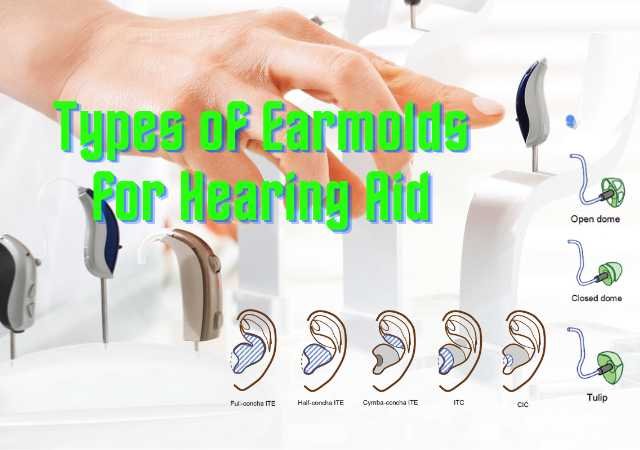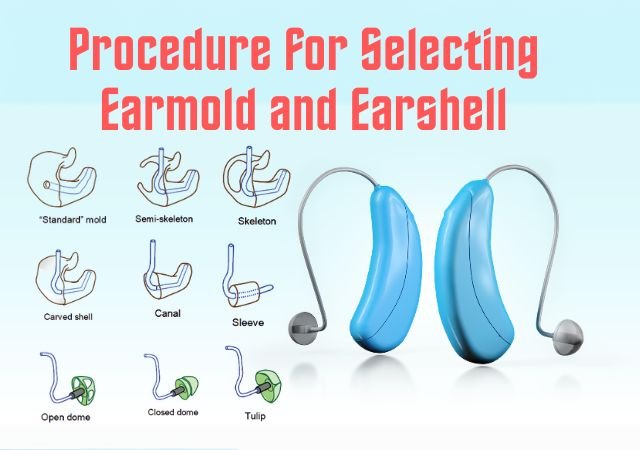Disorders of vestibular system cause vertigo and are divided into:
- Peripheral, which involve vestibular end organs and their 1st order neurons (i.e. the vestibular nerve). The cause lies in the internal ear or the VIIIth nerve. They are responsible for 85% of all cases of vertigo.
- Central, which involve central nervous system after the entrance of vestibular nerve in the brainstem and involve vestibulo-ocular, vestibulospinal and other central nervous system pathways.
Peripheral (Lesions of end organs vestibular nerve)
Ménière’s disease: It is characterized by vertigo, fluctuating hearing loss, tinnitus and sense of pressure in the involved ear. Vertigo is of sudden onset, lasts for a few minutes to 24 h or so.

Benign paroxysmal positional vertigo (BPPV): It is characterized by vertigo when the head is placed in a certain critical position. There is no hearing loss or other neurologic symptoms. Positional testing establishes the diagnosis and helps to differentiate it from positional vertigo of central origin. Disease is caused by a disorder of posterior semicircular canal though many patients have history of head trauma and ear infection.
Vestibular neuronitis: It is characterized by severe vertigo of sudden onset with no cochlear symptoms.
Attacks may last from a few days to 2 or 3 weeks. It is thought to occur due to a virus that attacks vestibular ganglion. Management of acute attack is similar to that in Ménière’s disease. The disease is usually self-limiting.
Labyrinthitis: These are three types of labyrinthitis:
- Circumscribed labyrinthitis is seen in cases of unsafe type of chronic suppurative otitis media (CSOM) and fistula test is positive.
- Serous labyrinthitis is caused by trauma or infection (viral or bacterial) adjacent to inner ear but without actual invasion. There is severe vertigo and sensorineural hearing loss. A partial or full recovery of inner ear functions is possible if treated early.
- Purulent labyrinthitis is a complication of CSOM. There is actual bacterial invasion of inner ear with total loss of cochlear and vestibular functions. Vertigo in this condition is due to acute vestibular failure. There is severe nausea and vomiting. Nystagmus is seen to the opposite side due to destruction of the affected
labyrinth.
Vestibulotoxic drugs: Several drugs cause ototoxicity by damaging the hair cells of the inner ear. Some primarily affect the cochlear while others affect the vestibular labyrinth. Aminoglycoside antibiotics particularly streptomycin, gentamicin and kanamycin have been shown to affect hair cells of the crista ampullaris and to some extent those of the maculae.
Head trauma: Head injury may cause concussion of labyrinth, completely disrupt the bony labyrinth or VIIIth nerve, or cause a perilymph fistula. Severe acoustic trauma, such as that caused by an explosion, can also disturb the vestibular end organ (otoliths) and result in vertigo.
Perilymph fistula: In this condition, perilymph leaks into the middle ear through the oval or round window. It can follow as a complication of stapedectomy, or ear surgery when stapes is accidentally dislocated. It can also result from sudden pressure changes in the middle ear (e.g. barotrauma, diving, forceful Valsalva) or raised intracranial pressure (weightlifting or vigorous coughing). A perilymph fistula causes intermittent vertigo and fluctuating sensorineural hearing loss, sometimes with tinnitus and sense of fullness in the ear (compare Ménière’s disease).
Syphilis: Syphilis of inner ear, both acquired and congenital, causes dizziness in addition to sensorineural hearing loss. Late congenital syphilis usually manifesting between 8 and 20 years, mimics Ménière’s disease with episodes of acute vertigo, sensorineural hearing loss and tinnitus. Hennebert’s sign, i.e. a positive fistula test in the presence of an intact tympanic membrane, is present in congenital syphilis. Neurosyphilis (tertiary acquired) can cause central type of vestibular dysfunction.
Acoustic neuroma: It has been classified in peripheral vestibular disorders as it arises from CN VIII within internal acoustic meatus. It causes only unsteadiness or vague sensation of motion. Severe episodic vertigo, as seen in the end organ disease, is usually missing
| Condition | Episodic | Time Course | Hearing Loss | Exacerbating factors | Associated Symptoms |
| Benign paroxysmal positional vertigo (BPPV) | Yes | < 1 min | No | Positional Changes – lying down – turning over the supine position – looking upward | None |
| Labyrinthitis | No | Constant, lasting days to weeks | Yes | Head Movement | Nausea/vomiting |
| Vestibular Neuritis | No | Constant, lasting days to weeks | No | Head Movement | Nausea/vomiting |
| Meniere’s Disease | Yes | 20 min to 12 hours | Yes, fluctuating | Atmospheric and weather changes, Diet | Aural fullness, Drop attacks, Hearing loss, Roaring Tinnitus |
| Persistent Postural-Perceptual Dizziness (PPPD) | Yes | Hours for most days over 3 months | No | Upright Posture, Active or Passive motion and exposure to moving visual stimuli or complex visual patterns | None |
| Superior semicircular canal dehiscence (SSCD) | Yes | Chronic with < 1 min episodes | Yes, Conductive Hearing loss with normal acoustic reflexes and suprathreshold bone rise | Sound and/or pressure induced | Hearing Loss, Autophony (amplification of sound), Noise avoidance, Hearing bodily sounds such as eye movement |
| Vestibular Paroxysmia | Yes | < 1 min, at least ten attacks of spontaneous spinning or non-spinning vertigo | Yes | Change in Head position or Hyperventilation | Hearing Loss, Nausea/vomiting, Tinnitus, Hypo-or hyperacusis, Stereotyped phenomenology in a patient |
| Probable Vestibular Paroxysmia | Yes | < 5 min, at least ten attacks of spontaneous spinning or non-spinning vertigo | Yes | Change in Head position or Hyperventilation | Hearing Loss, Nausea/vomiting, Tinnitus, Hypo-or hyperacusis, Stereotyped phenomenology in a patient |
| Vestibular Schwannoma/Acoustic Neuroma | True vertigo is uncommon. Dysequilibrium | The condition typically progresses slowly over months to years as the tumor gradually grows and puts increasing pressure on the vestibulocochlear nerve and eventually the brainstem. | Yes | Positional changes might slightly worsen the disequilibrium, but not in the episodic manner of BPPV. Lack of visual cues (e.g., walking in the dark) will often make the chronic imbalance more apparent. | Hearing Loss, Tinnitus and facial hypoesthesia |
| Bilateral vestibulopathy (BV) | No | Onset can be sudden (e.g., after gentamicin use or a bilateral viral attack) or gradual/progressive over months to years. | No | walking in the dark, on uneven surfaces, or in visually busy environments where the patient loses reliable visual and somatosensory input required to compensate for the damaged vestibular system. Head movements exacerbate oscillopsia. | Chronic imbalance and gait ataxia (staggering walk), oscillopsia (blurry/bouncing vision when the head moves, due to a lost vestibulo-ocular reflex), unsteadiness when turning corners quickly, and a “swimming” sensation of movement. Patients often report no “vertigo” (spinning sensation) because both ears are damaged equally. |
| Perilymph Fistula (PLF) | Yes | Individual episodes of dizziness or vertigo typically last seconds to minutes after a trigger event (e.g., cough, sneeze, strain, head movement, changes in altitude/pressure). There may be a constant background level of mild unsteadiness. | Yes (Fluctuating, often asymmetrical sensorineural hearing loss (SNHL), usually affecting lower frequencies, sometimes sudden). | Changes in intracranial or middle ear pressure are key triggers. This includes straining, lifting heavy objects, coughing, sneezing, nose blowing, bending over, exercising, flying/changes in altitude, and sometimes loud noises (Tullio phenomenon) or specific head positions. | Tinnitus (ringing/roaring in the ear), aural fullness (ear pressure), feeling of ear “popping”, nausea/vomiting during severe vertigo episodes, oscillopsia (blurry vision/bouncing world sensation) with pressure changes, and sometimes fluid drainage from the ear if associated with a temporal bone fracture. |
| Vestibulotoxic Drugs | No | Symptoms develop over days to weeks of medication use and the resulting imbalance is often permanent due to irreversible hair cell death in the inner ear. | Yes (Frequently occurs concurrently with balance issues). It is typically bilateral (both ears), high-frequency sensorineural hearing loss (SNHL), which is progressive and often permanent. | Symptoms are generally made worse by poor lighting conditions (walking in the dark), uneven surfaces, and quick head movements because the body is suddenly deprived of primary balance input from the damaged inner ears. | Symptoms develop over days to weeks of medication use, and the resulting imbalance is often permanent due to irreversible hair cell death in the inner ear. |
Central (Lesions of brainstem and central connections)
Vertebrobasilar insufficiency: It is a common cause of central vertigo in patients over the age of 50 years. There is transient decrease in cerebral blood flow. Common cause is atherosclerosis. Ischaemia in these patients may also be precipitated by hypotension or neck movements when cervical osteophytes press on the vertebral arteries during rotation and extension of head.
Posterior inferior cerebellar artery syndrome (Wallenberg Syndrome): Thrombosis of the posterior inferior cerebellar artery cuts off blood supply to lateral medullary area. There is violent vertigo along with diplopia, dysphagia, hoarseness, Horner syndrome, sensory loss on ipsilateral side of face and contralateral side of the body, and ataxia. There may be horizontal or rotatory nystagmus to the side of the lesion.
Basilar migraine: Migraine is a vascular syndrome producing recurrent headaches with symptom-free intervals. Headache is usually unilateral and of the throbbing type. Basilar arteryBasilar artery is an artery that connects the two vertebral arteries to the posterior part of the circle of Willis. It progresses upward on the front surface of the pons and supplies blood to the pons. Reference: Introduction to Neurogenic Communication Disorders (Eighth Edition) - Robert H. Brookshire [Book Pg. No. 451] More migraine produces occipital headache, visual disturbances, diplopia and severe vertigo which is abrupt and may last for 5–60 min. Basilar migraine is common in adolescent girls with strong menstrual relationship and positive family history.
Cerebellar disease: Cerebellum may be affected by haemorrhage (hypertension), infarction (occlusion of
arterial supply), infection (otogenic cerebellar abscess) or tumours (glioma, teratoma or haemangioma). Acute cerebellar disease may cause severe vertigo, vomiting and ataxia simulating an acute peripheral labyrinthine disorder.
Multiple sclerosis: It is a demyelinating disease affecting young adults. Vertigo and dizziness are common complaints. There are other multiple neurological signs and symptoms, e.g. blurring or loss of vision, diplopia, dysarthria, paraesthesia and ataxia. Spontaneous nystagmus may be seen. Acquired pendular nystagmus dissociated nystagmus and vertical upbeat nystagmus are important features in diagnosis.
Tumours of the brainstem and fourth ventricle: Gliomas and astrocytomas may arise from pons and midbrain; medulloblastoma, ependymomas, epidermoid cysts or teratomas may arise from floor of IVth ventricle. These tumours cause other neurological signs and symptoms in addition to vertigo and dizziness.
Epilepsy: Vertigo may occur as an aura in temporal lobe epilepsy. The history of seizure and/or unconsciousness following the aura may help in the diagnosis. Sometimes, vertigo is the only symptom of epilepsy and that may pose a difficult diagnostic problem.
Cervical vertigo: Vertigo may follow injuries of neck 7–10 days after the accident. It is usually provoked with movements of neck to the side of injury. Examination shows tenderness of neck, spasms of cervical muscles and limitation of neck movements.
| Condition | Episodic | Time Course | Hearing Loss | Exacerbating factors | Associated Symptoms |
| Vestibular Migraine (VM) | Yes | Minutes to day | No | Stress, Sleep deprivation, Visual stimuli, Motion | Headache, Photophobia, Phonophobia, Visual aura |
| Mal de Débarquement Syndrome (MdDS) | No | The condition is chronic. Symptoms typically start immediately after disembarking from a ship, plane, or other prolonged motion, and last for months or years. Spontaneous remission often occurs within 4-12 months, but for some, it becomes a permanent condition. | No | Stress and fatigue: Worsen the rocking/swaying sensation. Visually complex environments: Supermarkets, crowds, patterns, and bright lights often intensify the perceived movement. Sitting or standing still: Symptoms are often worse when stationary. Closed spaces: Can sometimes exacerbate symptoms. | A constant sensation of rocking, swaying, bobbing, or floating, severe imbalance (ataxia), fatigue, headache/migraine symptoms, anxiety, “brain fog” or difficulty concentrating, and sensitivity to bright lights or busy visual environments. Symptoms are often relieved by returning to passive motion (e.g., being back on a boat or in a moving car). |
| Cerebral Ischemia | No | Constant, lasting days to weeks | Variable | None | Nausea/vomiting, Dysarthria, Facial anesthesia, Hemiparesis, Headache, Diplopia, Visual Field defects, Blindness, Dysphagia, Ataxia |
| Vertebrobasilar insufficiency (VBI) | Yes | Seconds to Minutes | No | Head and neck movements, especially looking up or extending the neck (which can temporarily compress blood vessels), low blood pressure, dehydration, and increased physical exertion. | VBI symptoms typically occur with other neurological signs: sudden severe imbalance (ataxia), vision disturbances (double vision, blurred vision, or transient blindness), slurred speech (dysarthria), difficulty swallowing (dysphagia), facial numbness/weakness, “drop attacks” (sudden fall without loss of consciousness), and limb weakness/numbness. |
| Posterior inferior cerebellar artery syndrome (Wallenberg Syndrome) | No | The onset is sudden (minutes to hours) | No | Factors that require the patient to rely on vestibular input alone (e.g., walking in the dark, closing eyes) can make the severe imbalance more prominent. | A hallmark of Wallenberg Syndrome is the presence of multiple central neurological signs: severe vertigo and profound imbalance (ataxia), nausea and vomiting, ipsilateral facial pain and numbness, contralateral body numbness, difficulty swallowing (dysphagia), hoarseness (dysphonia), hiccups, Horner’s syndrome (drooping eyelid, constricted pupil), and central nystagmus. |
| Basilar migraine | Yes | Typically lasts between 5 minutes and 60 minutes. The subsequent headache phase can last anywhere from 4 to 72 hours. | No | Classic migraine triggers such as stress, lack of sleep, certain foods (MSG, red wine, aged cheese), hormonal changes, and bright or flashing lights can induce an attack. Head movements during the acute attack may worsen vertigo. | The defining feature is the presence of brainstem aura symptoms: vertigo, ataxia (loss of coordination), tinnitus, reduced hearing, double vision, slurred speech (dysarthria), and decreased level of consciousness. A severe headache typically follows the aura phase. There are no motor weaknesses or permanent deficits. |
| Cerebellar disease | No | Symptoms are generally permanent once the disease progresses or an injury occurs. Onset can be sudden (stroke) or insidious/slowly progressive (degenerative diseases like ataxia). | No | Symptoms are consistently present but become more obvious when visual cues are removed (e.g., walking in the dark or with eyes closed), or when attempting fine motor tasks. Fatigue or alcohol consumption can worsen the lack of coordination (ataxia). | Ataxia (severe lack of coordination, wide-based gait/unsteady walking), dysarthria (slurred speech), intention tremor (shaking that occurs during movement), dysmetria (poor judgment of distance/reach), and specific types of eye movement abnormalities (e.g., gaze-evoked nystagmus, pursuit abnormalities). |
| Multiple Sclerosis (MS) | Yes | Relapses can last days to weeks, with resolution and remission periods in between. Progressive symptoms (constant disequilibrium) worsen slowly over months to years. The specific duration varies widely between patients and types of MS. | Rarely | Heat and fatigue are common exacerbating factors (Uhthoff’s phenomenon). Stress, infection, physical exertion, and general poor health can also trigger or worsen a relapse. Walking in the dark or on uneven surfaces makes existing imbalance more apparent. | Heat and fatigue are common exacerbating factors (Uhthoff’s phenomenon). Stress, infection, physical exertion, and general poor health can also trigger or worsen a relapse. Walking in the dark or on uneven surfaces makes the existing imbalance more apparent. |
| Tumours of the brainstem and fourth ventricle | No | Develop gradually over weeks to months | No | Symptoms are consistently present. They might subtly worsen with certain head positions if the tumor is causing fluid pressure changes in the brain (e.g., changes in intracranial pressure), but the primary issue is constant structural pressure. | Ataxia (severe imbalance/incoordination), nausea and vomiting, headaches (often worse in the morning or when lying down, due to increased intracranial pressure), cranial nerve palsies (facial weakness, difficulty speaking/swallowing, vision problems like double vision), hydrocephalus (fluid buildup in the brain), and long-tract signs (weakness or sensory loss in the arms/legs). |
| Epilepsy | Yes | Lasting only seconds to minutes | No | Classic seizure triggers can induce an attack: sleep deprivation, stress, alcohol withdrawal, flickering or flashing lights (in photosensitive epilepsy), or medication non-compliance. | The sensation of vertigo is often an “aura” or a focal seizure itself. It can be associated with other seizure symptoms like altered consciousness, confusion, déjá vu, abnormal tastes/smells, repetitive body movements (automatisms), or loss of motor control. The short duration and potential for other central neurological signs help distinguish it from other forms of vertigo. |
Other causes of Vertigo
Ocular Vertigo: Normally, balance is maintained by integrated information received from the eyes, labyrinths and somatosensory system. A mismatch of information from any of these organs causes vertigo and in this case from the eyes. Ocular vertigo may occur in case of acute extraocular muscle paresis or high errors of refraction.
Psychogenic Vertigo: This diagnosis is suspected in patients suffering from emotional tension and anxiety. Often other symptoms of neurosis, e.g. palpitation, breathlessness, fatigue, insomnia, profuse sweating and tremors are also present. Symptom of vertigo is often vague in the form of floating or swimming sensation or light headedness. There is no nystagmus or hearing loss. Caloric test shows an exaggerated response.
| Condition | Episodic | Time Course | Hearing Loss | Exacerbating factors | Associated Symptoms |
| Age-related disequilibrium (presbystasis or presbyvestibulopathy) | No | Symptoms are typically progressive and permanent. They develop gradually over years as a result of the aging process and cumulative system decline. | Yes | Walking in the dark or on uneven/compliant surfaces (carpet, grass) makes the unsteadiness much worse, as the patient relies more heavily on vision and stable ground cues to compensate for the impaired vestibular system. Fatigue and illness also worsen balance. | Gait impairment (unsteady walking, slow gait speed, wide base), increased fear of falling, reduced proprioception (numbness/less feeling in feet), visual impairment (cataracts, macular degeneration), reduced muscle strength, and general loss of confidence in balance. |
| Orthostatic | Yes | < 1 min | No | Standing up, Bending over | Nausea, Tachycardia, Presyncope |
| Head Trauma | Yes and No (It depends on the specific resulting injury) | Onset can be immediate or delayed | Yes and No (Depends on injury) | Exacerbating factors depend on the specific injury: positional changes (for BPPV); pressure changes (for perilymph fistula); visual stimuli or fatigue (for central/PPPD causes); head movements in general (if compensation is impaired). | Highly varied: Nausea/vomiting, tinnitus, headache, concussion symptoms (memory loss, sensitivity to light/sound), neurological deficits (weakness, numbness) if brain damage occurred, anxiety, cognitive dysfunction, and potential skull base fracture signs (e.g., CSF leak). |
| Cervical Vertigo | Yes | The condition is often chronic and persistent, linked to the underlying neck injury or musculoskeletal issue (e.g., whiplash recovery, arthritis). Individual flares of dizziness can last minutes to hours and correlate with neck pain intensity. | No | Head and neck movements (especially rotation/extension), sustained awkward neck postures (e.g., looking up for a long time), increased neck pain or stiffness, and physical exertion. | Neck pain and stiffness are primary symptoms. Other associated symptoms include headache (often occipital), restricted neck range of motion, muscle tenderness/spasm in the neck/shoulders, lightheadedness rather than true vertigo, and unsteadiness that worsens with head movements but usually improves when the head is still or neck pain is reduced. |
| Syphilis | Yes and No (Otosyphilis often presents with fluctuating or episodic attacks similar to Meniere’s disease, while neurosyphilis symptoms might be more constant). | Symptoms can develop rapidly (weeks to months after initial infection), be chronic if untreated, and are permanent if damage is done. Episodes can last minutes to hours, or the disequilibrium can be constant if the central nervous system is involved. | Yes (If otosyphilis is present). Hearing loss is typically rapidly progressive sensorineural hearing loss, often affecting both ears but asymmetrically, and may fluctuate. | Exacerbating factors are generally related to disease progression. Stress or lack of treatment can worsen symptoms. There are no specific positional triggers as with BPPV. | Otosyphilis presents with the “Meniere’s mimickers”: fluctuating hearing loss, tinnitus, aural fullness, and vertigo. Neurosyphilis presents with CNS symptoms: severe headaches, cranial nerve deficits (vision problems, facial paralysis), ataxia (incoordination), cognitive decline/personality changes, and meningitis signs. |
References:
⇒ Diseases of Ear, Nose and Throat & Head and Neck Surgery – PL Dingra (Book)
⇒ Essentials of Audiology – Stanley A. Gelfand, PhD (Book)
You are reading about:
Disorders of Vestibular System







0 Comments